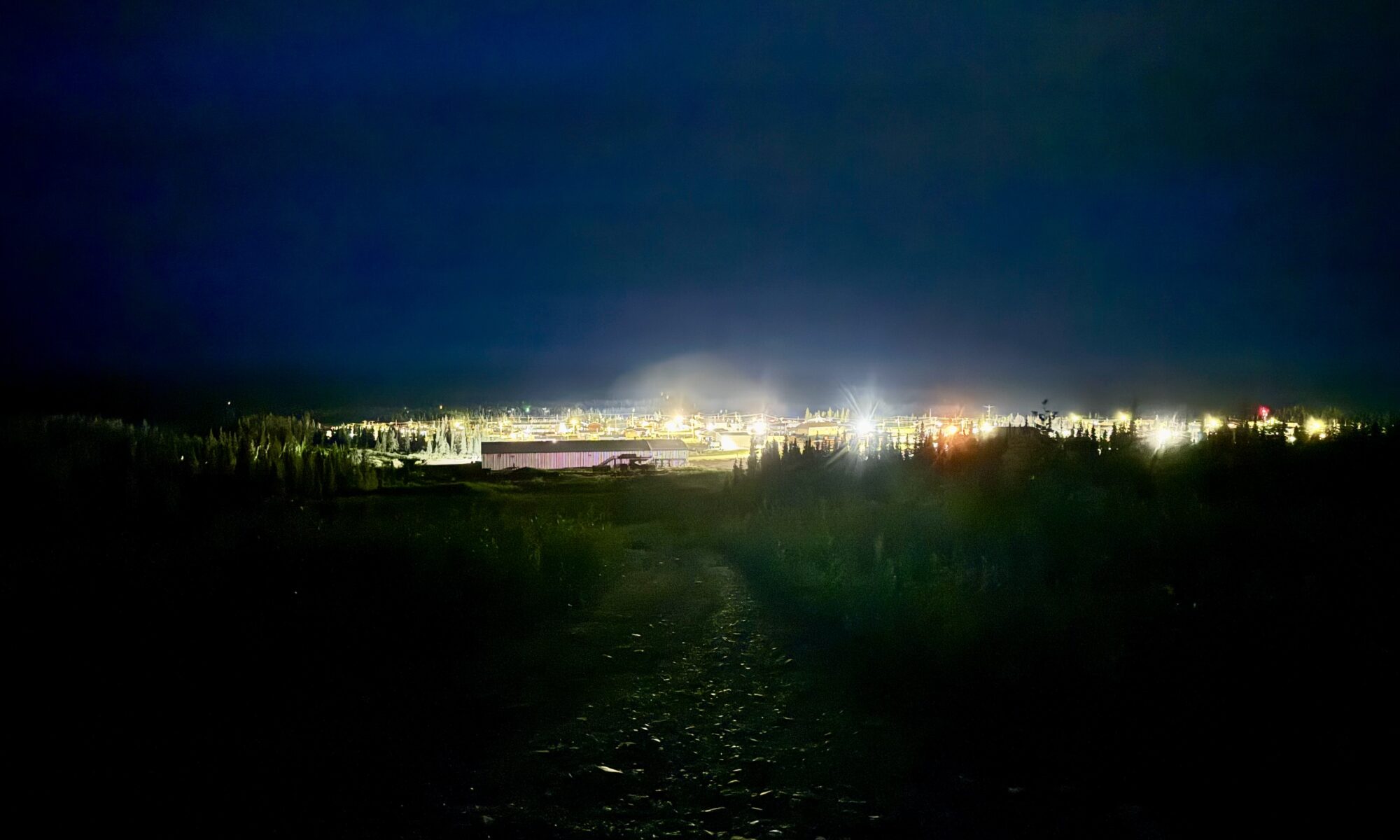Thu, Sep 5
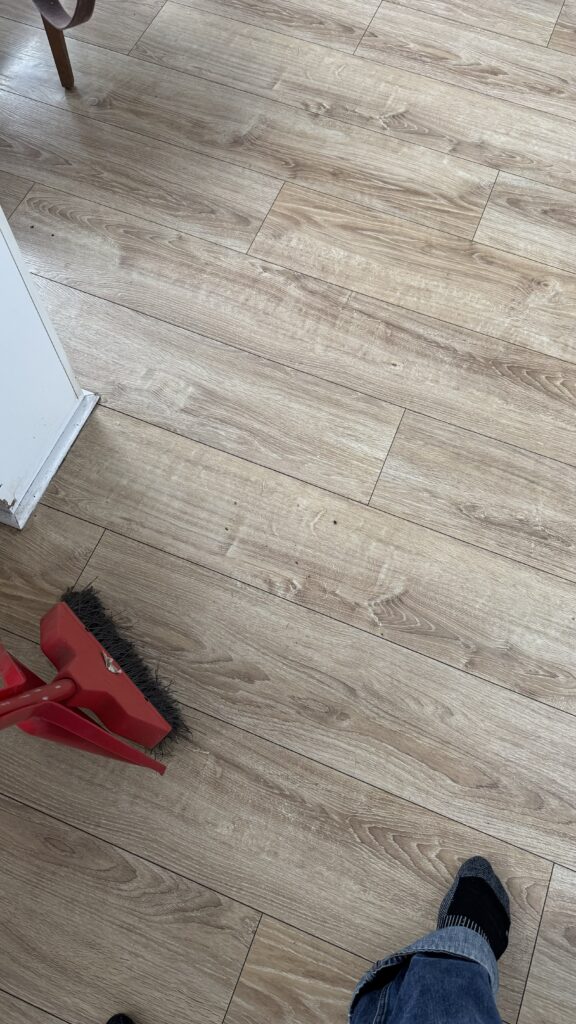
This morning, I cleaned up the rectory in preparation for leaving and stopped by the Naskapi Development Corporation and the Naskapi Nation band office to see if anyone needed anything. I wanted to know if there would be another time they’d need me, possibly in late October.

Jimmy Shecanapish, ever so kind, offered to drive me to the airport, as he usually does. But today, God’s timing was different from mine.

When we got to the airport, it was packed. The crowd was overwhelming, with so many people heading home after the Elders Gathering. That’s when I learned about Air Inuit’s new check-in policy, which was stricter than I had anticipated.
Because there were so many standby flights, seats were in high demand. I missed the check-in window by just three minutes.
Disappointed, I called my girlfriend to let her know the situation. Trisha, in the Band Office, worked her magic and got me on a flight for the next day.
I was disappointed, but I decided not to get too upset and just rolled with it.
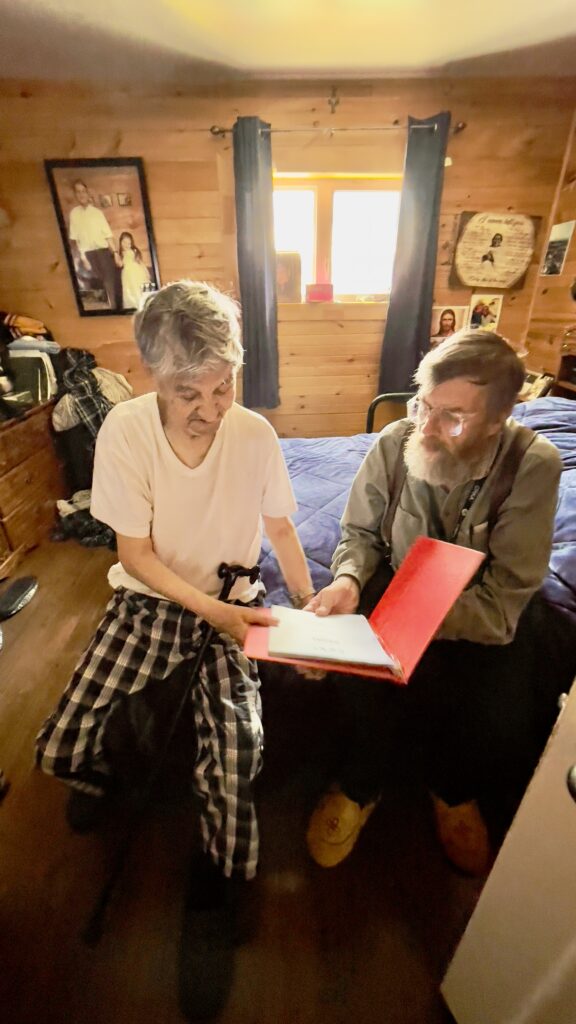
While scrolling through Facebook, I saw a post from Matthew Mameamskum’s family. Something about it instantly gave me a sinking feeling. Matthew had always been close to my family—he worked with my dad, Bill, checking translations for the church and the community. His wife, Kitty, always ensured I was fed when she provided lunches for Innu kids at Jimmy Sandy Memorial School.

I jumped on the side-by-side and rode over to his house, where the driveway was already filling up with trucks. Community members were beginning to gather. Inside, I sat with Ishko Mameamskum and his brothers, paying my respects.
Rod Mackenzy was there, helping coordinate, and passed our masks to everyone since a few family members were sick.

Matthew had just passed away.
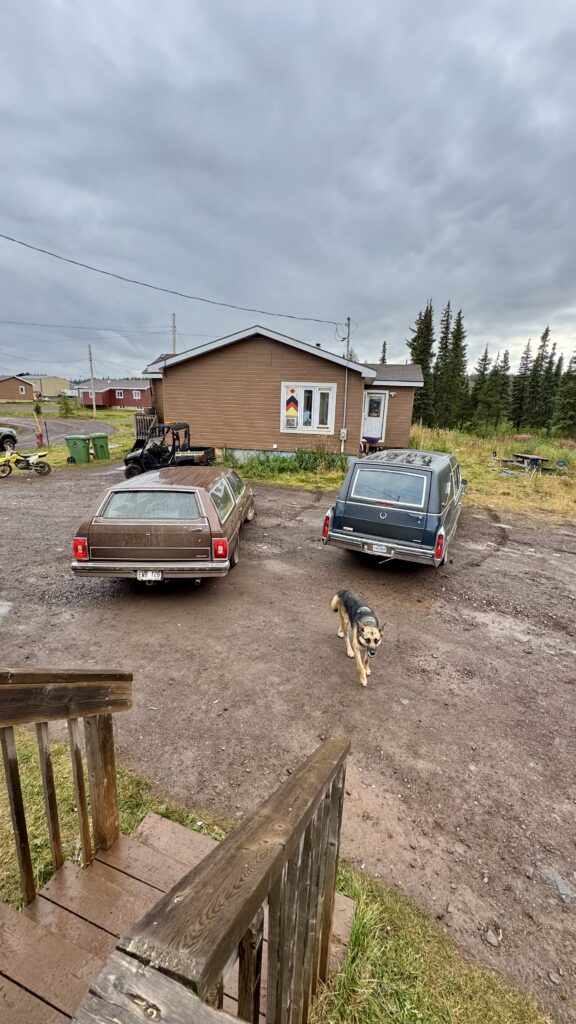
As I was there, I remembered that today was also George Amos Guanish’s funeral, so I quickly went to his house as the hearse was arriving.
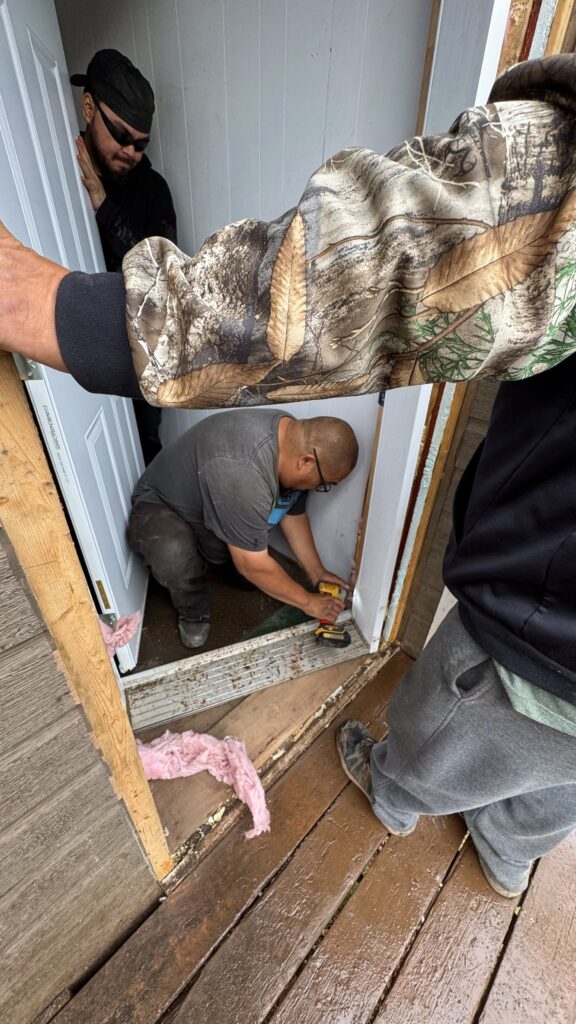
John Chescappio was, as usual, helping in every way possible, even removing the door frame so that the pallbearers could carry the casket out smoothly.
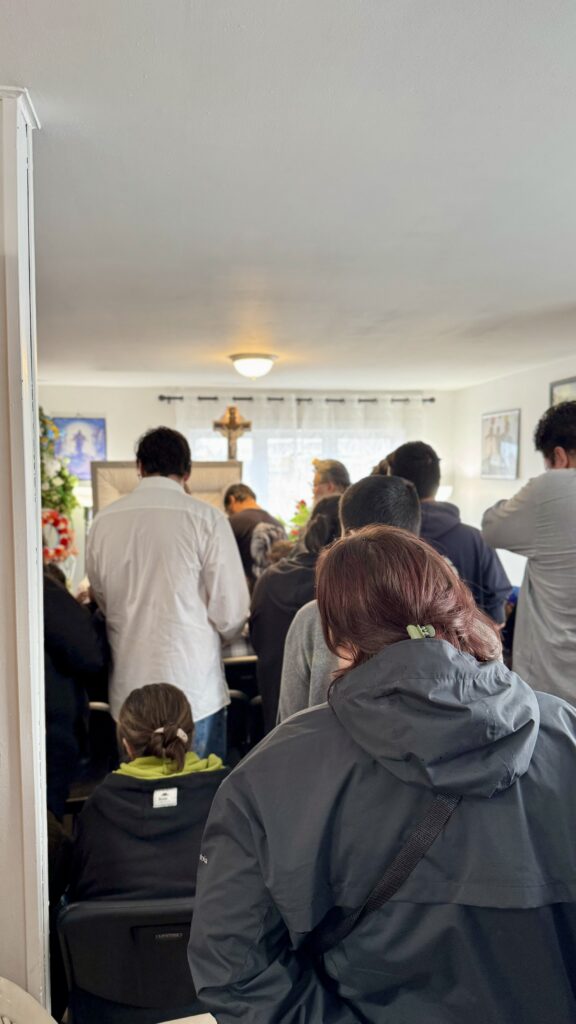
The house was packed. The family had laid cardboard on the floor to accommodate the steady stream of visitors who came through the back door, paid their respects, and exited through the front.
Outside, I spoke with Uapush, who had been very close to George. He wanted to do something to show his respect, so I agreed to help him get his guitar so he could sing at the funeral.

The pallbearers gently lowered George’s casket out of the house and into the hearse.
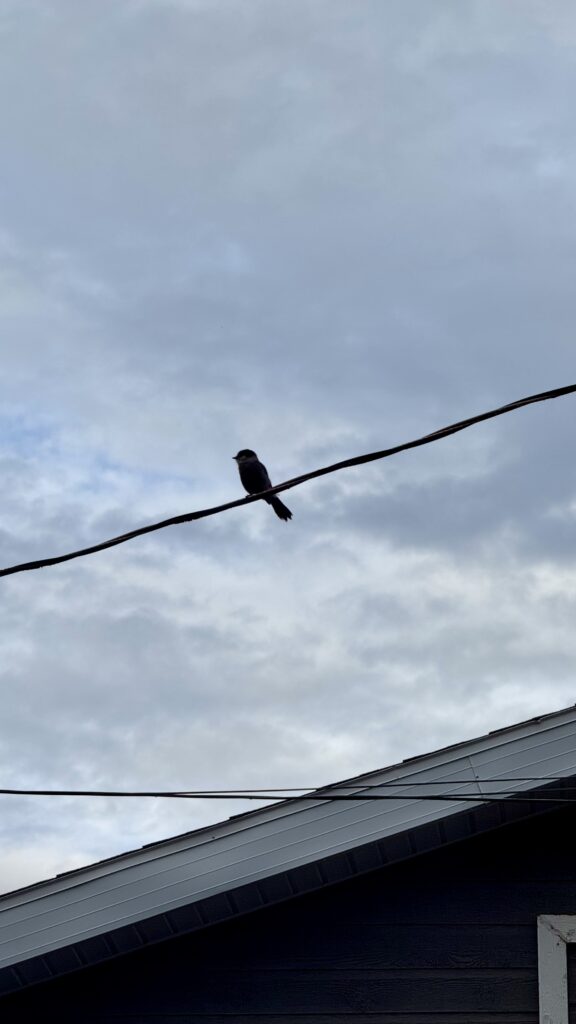
A whiskychak watched over us curiously.
The family started walking in a procession to the church, and Uapush and I sped around the back to his house to go get his guitar.
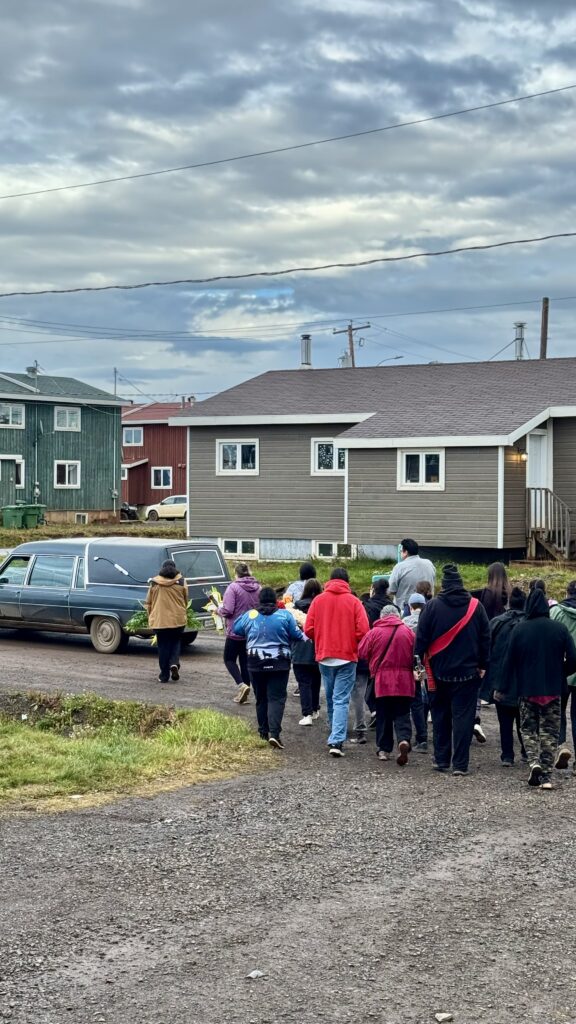
The procession to the church was somber, and the church was completely filled.
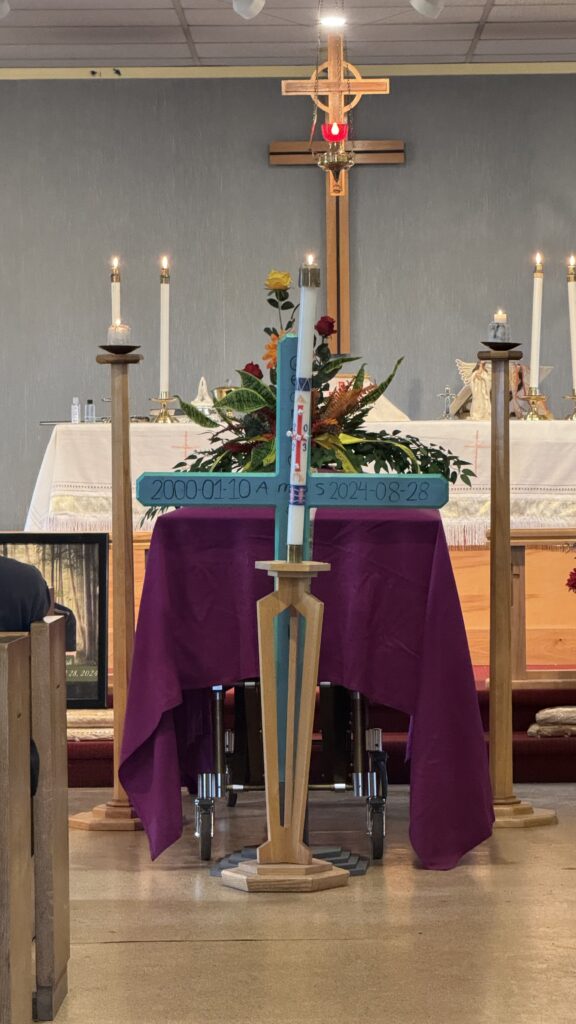
Susan Nabinacaboo’s voice filled the space with Family Circle, and the air was thick with emotion.

When the time came, Uapush played a song that brought tears to the family.
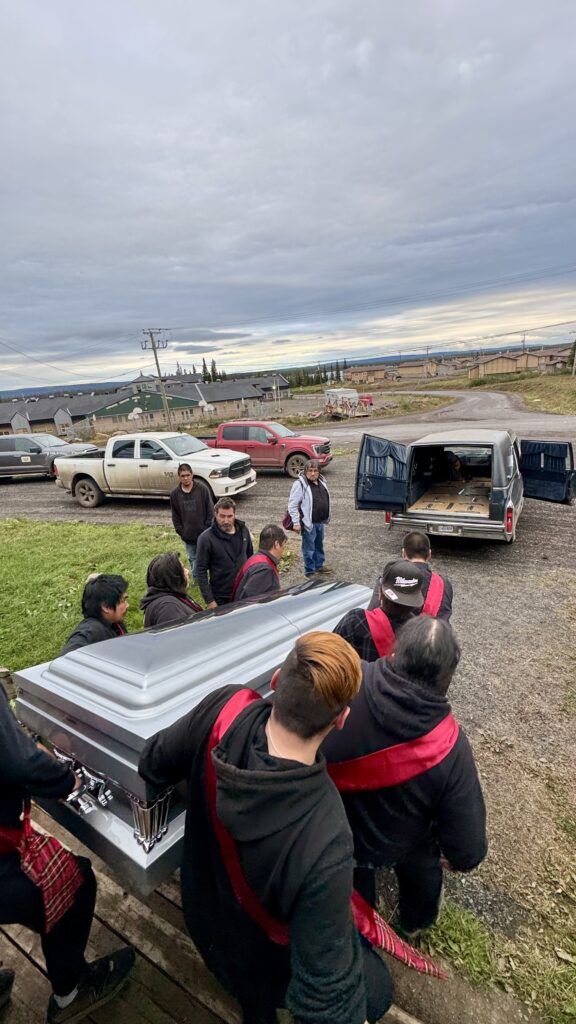
After the service, the pallbearers brought the casket down the church steps and placed it back in the hearse.

As is tradition, a parade of cars formed and circled the village, passing George Amos’ home on the way to the cemetery.

Out of respect, traffic in the opposite direction stopped to let us pass.

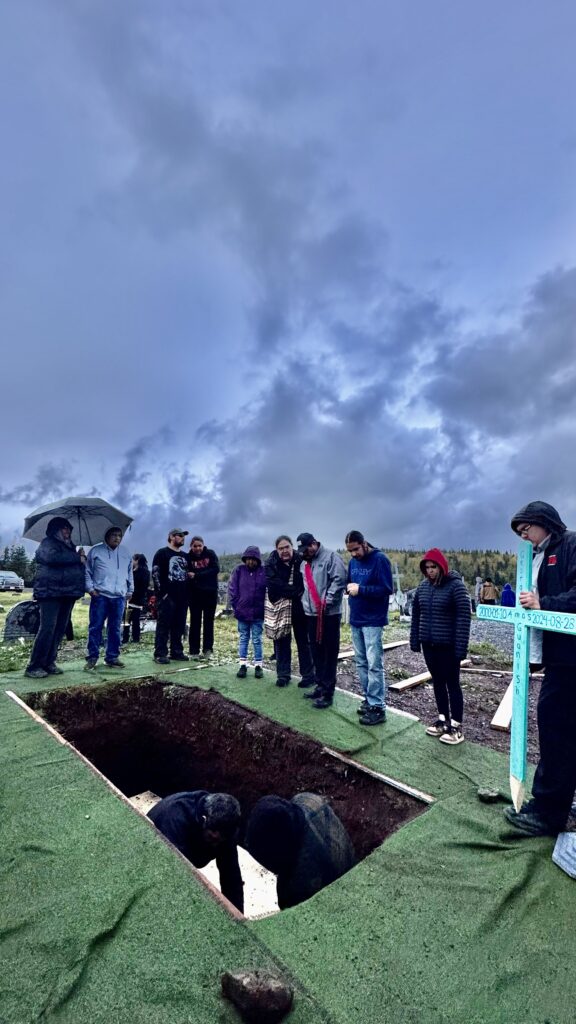
At the cemetery, a light rain began to fall. It softened the heavy hearts of those grieving, mingling with tears.
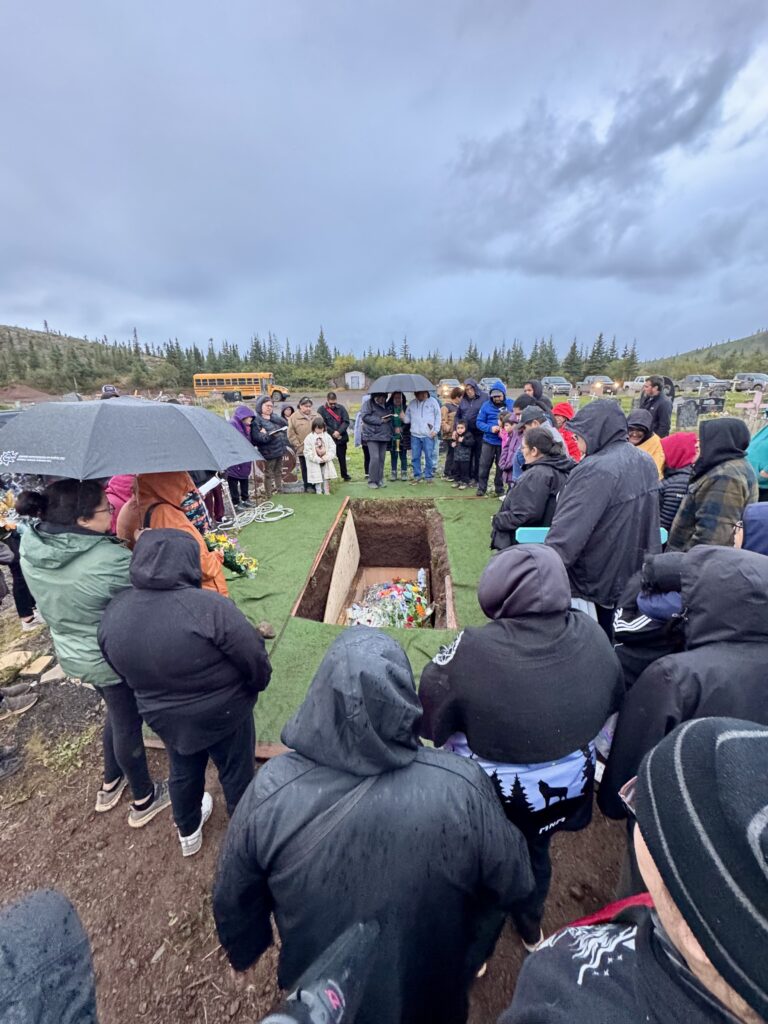
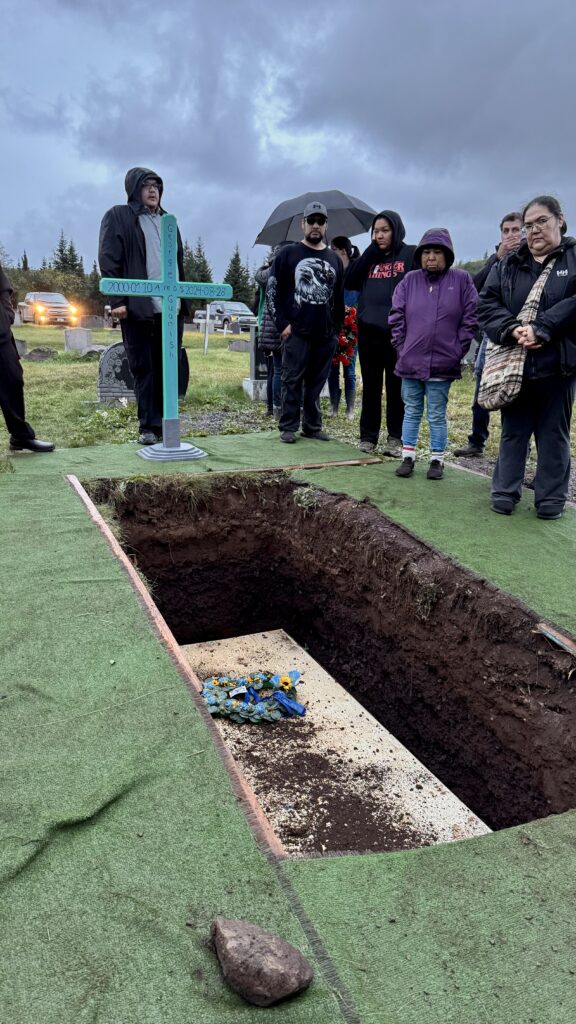
We offered prayers and shared comfort in hushed tones.
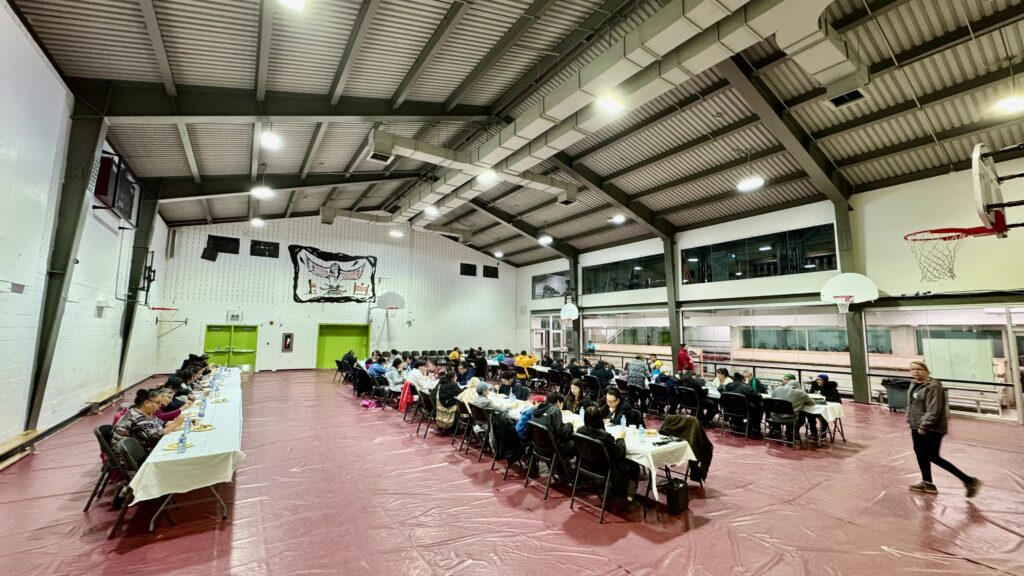
After the ceremony, we returned to Kawawachikamach, where the family had prepared a feast. People shared smiles through their tears, remembering the good times they had with George Amos.
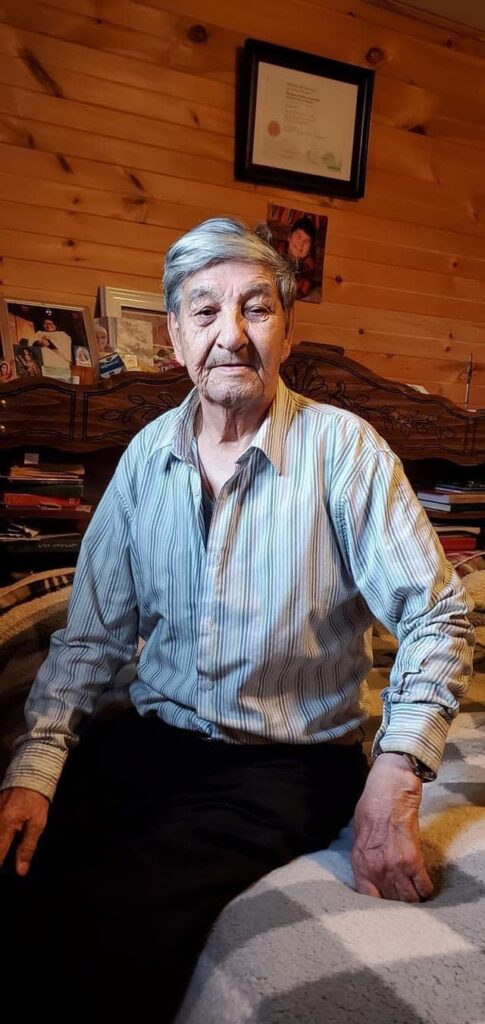
Later that day, I returned to Matthew’s house to check on his family. I spoke with his daughter Louise for a while. Though it was difficult, she found peace knowing that Matthew was now reunited with Kitty.

As the evening wore on, I spent some time alone on the hill overlooking the village where I grew up.
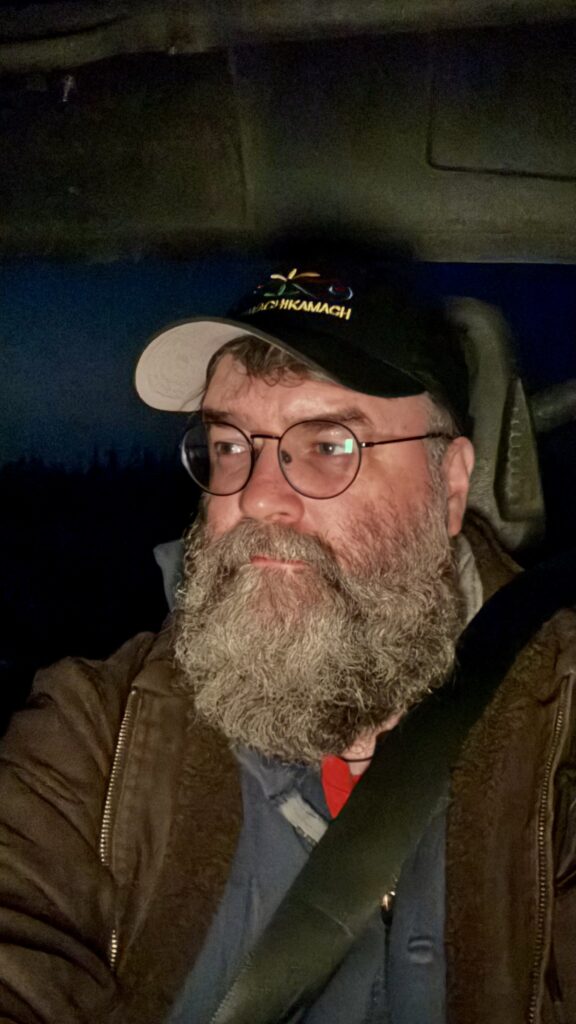
I’m so grateful that I missed my flight. It allowed me to be here for the people who matter most to me.
Fri, Sep 6
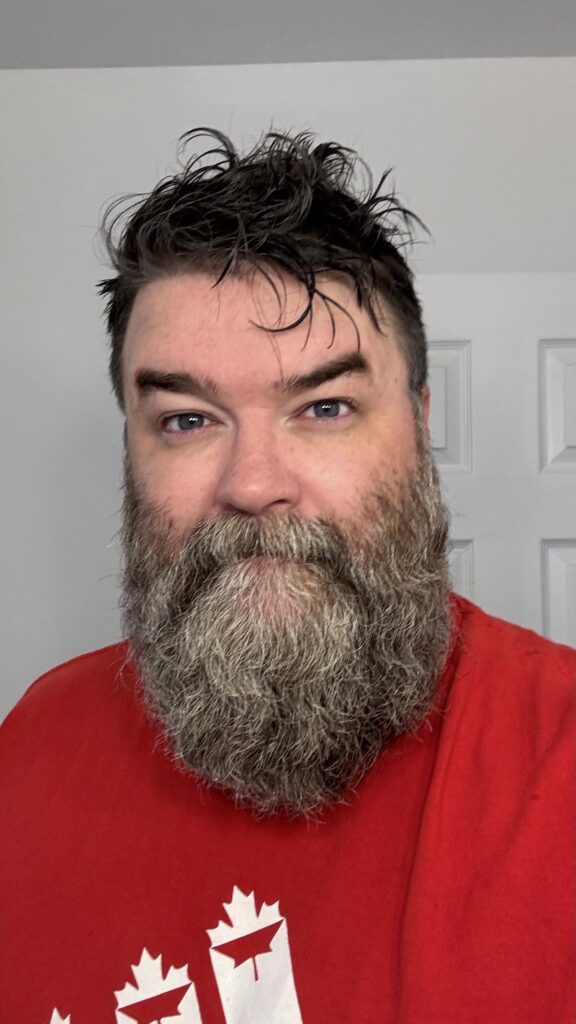
Woke up, showered, and took some time to clean up a little more. Everything’s packed, and I’m ready to go.

After loading up, I made my way to drop off the rectory keys at the Naskapi Development Corporation and returned the side-by-side to the Naskapi Nation garage. That side-by-side has been a godsend for getting around!

Jimmy Shecanapish, always looking out for me, picked me up today—in a giant sedan SUV limousine, no less! Quite the departure from my usual rides.
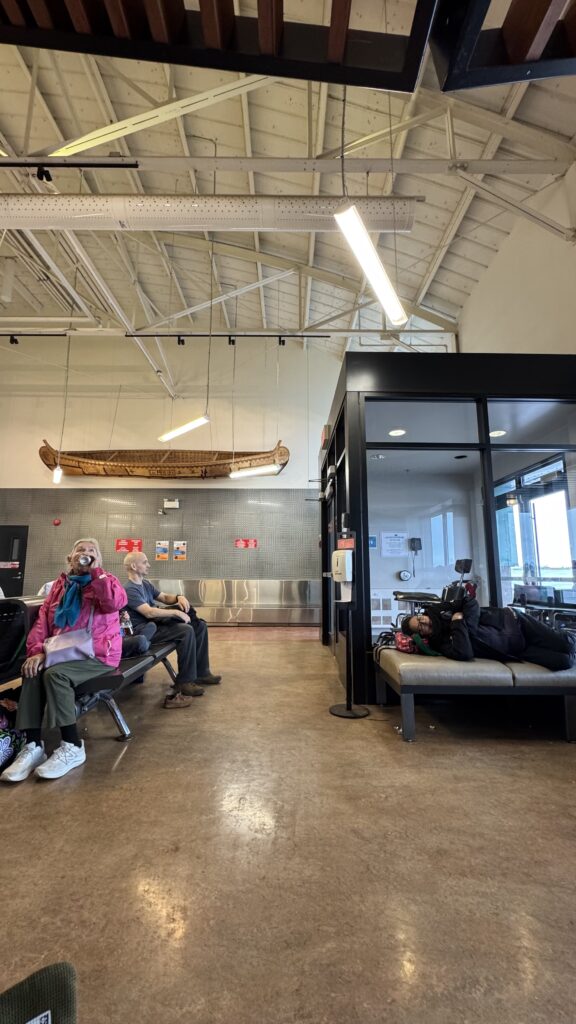
At the airport, I had some time before boarding. I always love looking at the canoe on the wall here. Every community has its own style of canoe design, and it reminds me of how deeply unique each nation is.
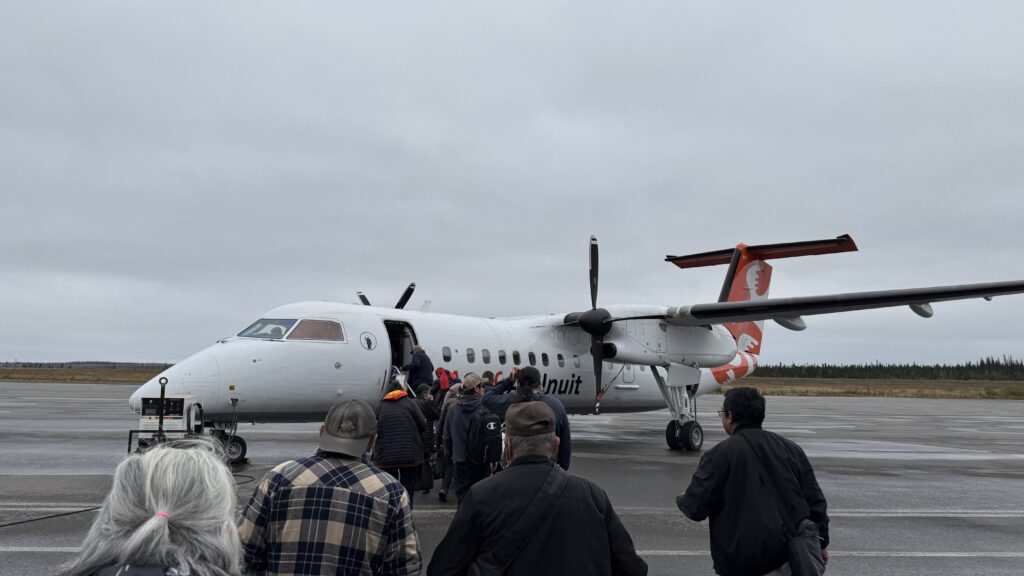
Then came the moment I dreaded—getting ready to board. No matter how many times I do it, I hate leaving. This place always feels like home, and it’s never easy to say goodbye.
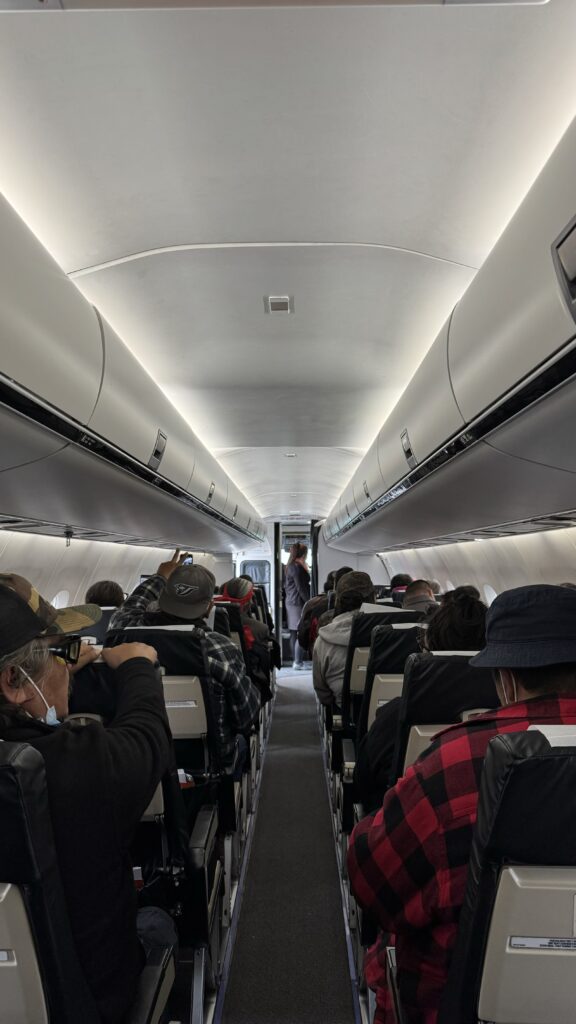
Once boarded, I was surrounded by many Attikamekw people heading home after the Elders Gathering.
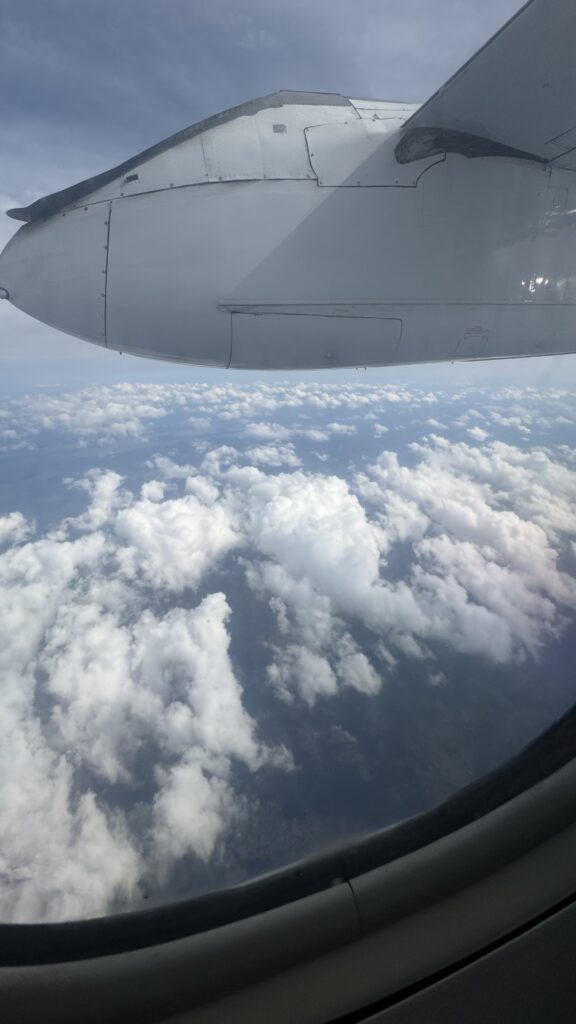
I love being among the clouds; something about flying always brings me peace.

We made a quick stop in Quebec City. Good friends make life sweeter—especially when they bring you poutine on the plane.

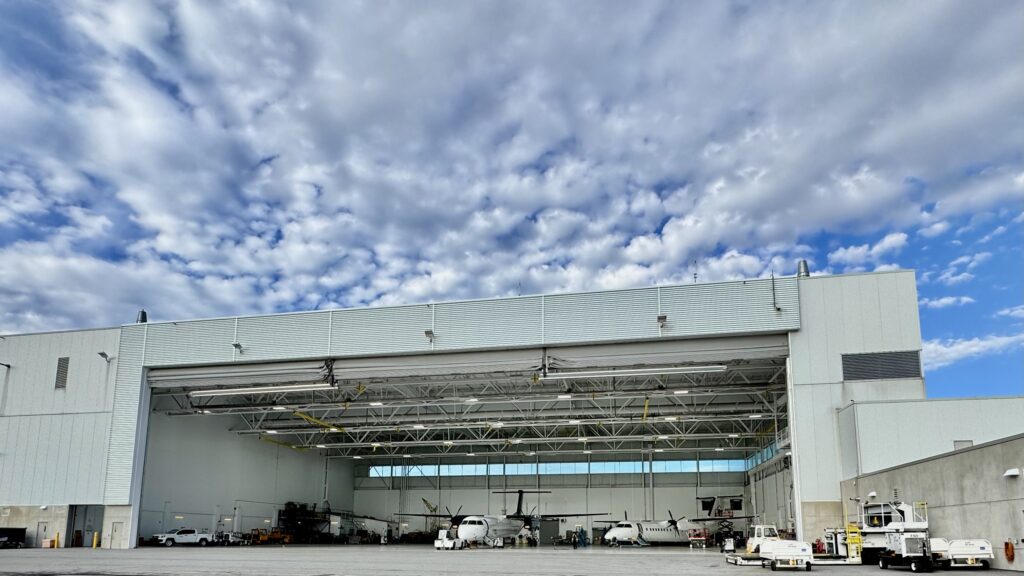
And finally, we landed in Montreal.
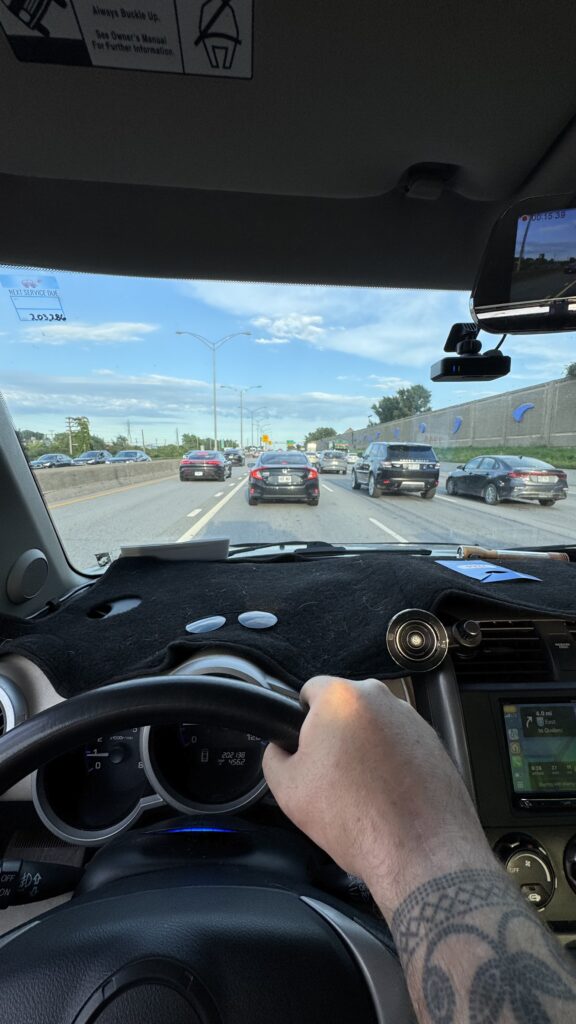
Man saw the beauty of lakes, rivers, forests, and mountains… and somehow invented traffic.
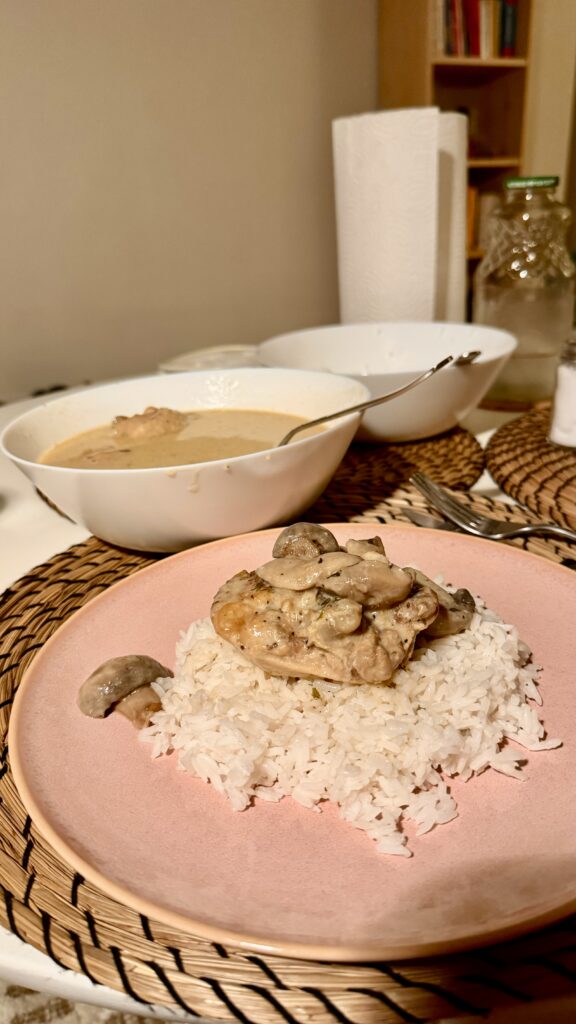
But the best part? Dinner with her. ❤️

